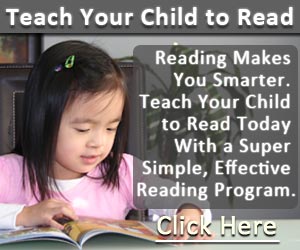In the previous article, we had discussed in some length about the physical developments for a 4 year old child. Here, we'll list some of the social and emotional development milestones you might see with a four year old child.
You and your child are upon an interesting period of time in both of your lives. This is a time when your toddler begins to really learn about and display their emotions and feelings, and you could be often times caught off guard by their rapid mood changes or surprised by their tantrums. But this is all part of growing up, and it's all part of parenting that we all have to learn to deal with one time or another. It is through these experiences that helps us and our children grow. As parents, we need to take these opportunities to help our children become more in touch with their emotions and help them better understand their feelings and help them articulate and deal with those feelings.

Our babies acting silly.
Tantrums and Outbursts
Without realizing it, a four year old child may experience some levels of frustration as he or she learns and understands what he or she is allowed or not allowed to do. Often times, the child will resort to crying and whining to get their way with the parents, and temper tantrums or outbursts are an outlet for this frustration. While it may not initially be aimed at you as the parent, the child at this age will continue to try different behaviors and try to "test the limits", and depending on how the parent responds, this could turn into a rather vicious cycle of tantrums, outbursts, and the parent giving up and giving in to the crying child - further reinforcing their inclination to engage in this type of behavior.
It will be difficult to stop or talk with a child in the middle of a tantrum - often times, the child cannot stop him- or herself. You need to stay calm, close by, and let your child know that you are calm and in control. Having your own outburst will likely frighten the child and make their tantrum even worse. At these times, make sure your child is somewhere safe (in a private place) where their very animated behavior (rolling, flailing about, pounding) will not cause injuries to themselves or others. Stay close by and let the tantrum run its course - always stay in control and do not let your anger and frustration take control of you. Once the tantrum is over, comfort your child and let your child know that you're glad they are feeling better. Your child will be tired, and it maybe wise to wait for a later time to talk with your child about their feelings. Do not give in to whatever tantrum your child may have been about. It's important that your child understands that throwing tantrums will not get them what they want.
Emotional & Social
- A four year old can be very outgoing and very friendly, but at the same time, their mood may change rather quickly and can be unpredictable.
- The child learns to work and cooperate with other children, and will enjoy participating in group activities.
- A 4 yr old child begins to understand the concept of taking turns, but may not always want to take turns.
- You may notice that children at this age like to often tell on others. This is something we notice quite often with our children. Our 4 year old certainly likes to tattle on her little brother.
- The child can become frustrated and express anger verbally such as yelling loudly.
It's important to help a child at this age learn about all the different emotions and feelings they experience. Name those feelings with them, talk with them, and explain to them about the emotions they are having. Help your child express their feelings and frustrations. This could be done physically such as running around in a park to let off the steam, or verbally with your help and guidance. Ask your child about what they are feeling, and talk with them about why they feel that way.
You can help your child develop independence by giving them more control over the smaller things in life. For example, you can let your child pick what clothing they'd like to wear, what cup or bowl they like to use for dinner, what books they'd like to read, or what family activities they'd like to do together.
Teaching a child through actions and consequences is a great way to remove yourself as the "rule maker", and allows the child to learn through learning with consequences. Instead of simply setting rules and forcing your child to follow the rules, let them learn through the consequences of their actions. By four years old, many children can learn very well with this method. For example, if your child is wasting paper while drawing or doing crafts, tell them that once they've used the paper, there's no more, so they need to learn to conserve and not waste paper. Or, if your child is being rough with a toy and breaks it, they learn the consequence that they can no longer play with the toy because they did not take care of it. Or if they like to leave their belongings all over the place, it gets lost, and they can't find it again. Using these simple consequences of actions is a great way help a child understand and think about the positive and negative outcomes of their actions.
Help your child develop to their fullest potential by teaching them to read at an early age.



 Watch a 2 year old toddler read, and see how this child's reading skill develops at 3 and 4 years old.
Watch a 2 year old toddler read, and see how this child's reading skill develops at 3 and 4 years old.